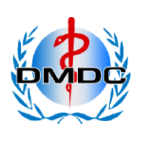CT scan vs MRI: What’s the difference?

Diagnostic imaging plays a crucial role in identifying the root cause of a medical problem and providing essential information to diagnose various conditions.
When it comes to imaging, CT scan vs MRI scan are two of the most commonly recommended tests—but what exactly is the difference between CT scan and MRI scan?
This blog breaks down how each scan works, what conditions they best detect, and what to expect during the procedure.
What is a CT scan?
A CT (Computed Tomography) scan uses X-rays to take cross-sectional images of the body. The machine rotates around you, capturing detailed pictures of bones, organs, blood vessels, and soft tissues.
Key Highlights:
- Quick and painless procedure
- Ideal for detecting internal injuries, bone fractures, and tumors
- Commonly used in emergencies due to quick results
- Involves low-level radiation exposure
What is an MRI scan?
MRI (Magnetic Resonance Imaging) scan is an imaging technique that uses strong magnets and radio waves to generate high-resolution images of the body’s internal structures, especially soft tissues.
Key Highlights:
- No radiation involved
- Best suited for examining the brain, spine, joints, ligaments, and organs
- Longer scan time compared to CT scan
- Not suitable for individuals with certain metal implants or pacemakers
This complete image gives healthcare professionals a comprehensive view of the area being examined, which is essential when evaluating complex structures such as:
- Teeth and jawbones
- Sinuses
- Airway pathways
- Temporomandibular joints (TMJ)
CT scan vs MRI scan: Key differences side-by-side
If you’ve ever wondered about the difference between CT scan and MRI scan, this blog breaks it down clearly—so you know what to expect and when each might be used.
Feature | CT scan | MRI scan |
Technology | X-rays | Magnetic fields and radio waves |
Best for imaging | Bones, chest, lungs, trauma and cancer | Brain, spinal cord, muscles, joint |
Radiation exposure | Yes | No |
Scan duration | Fast (5-10 minutes) | Longer (20-60 minutes) |
Noise | Less noisy | Louder with mechanical sounds |
Cost | Generally less expensive | Often more expensive |
Metal safety | Safe for most implants | Unsafe for some implants/pacemakers |
What does a CT scan show?
CT scans are particularly effective at capturing clear images of dense structures and are commonly used in emergency settings due to their speed.
They can detect:
- Bones and joints – fractures, bone tumors, signs of arthritis
- Chest and lungs – infections, tumors, pulmonary embolisms
- Abdomen and pelvis – kidney stones, gall bladder stones , pancreatitis, liver tumors, appendicitis, internal organ injuries
- Blood vessels – aneurysms or blockages (with CT angiography)
- Trauma cases – internal bleeding, head injuries
CT scans are ideal when a quick, detailed overview is needed—especially for bone and acute injuries.
Which is better: CT scan vs MRI scan?
It’s not about one being better than the other—it’s about which scan is more appropriate for your specific condition. The best choice between CT scan vs MRI scan depends on several factors, including:
- The part of the body being examined
- The level of detail required
- Time sensitivity
- Health conditions or contraindications (e.g., pregnancy or metal implants)
Your doctor will determine the best imaging method based on your symptoms, medical history, and diagnostic goals.
Visit DMDC for CT and MRI scans in Dubai
When it comes to accurate diagnostics and timely care, trust DMDC—a name synonymous with excellence in healthcare since 2000.
With over 500,000 satisfied patients, we’ve built a legacy rooted in precision, compassion, and innovation. At our state-of-the-art radiology and medical testing laboratory, we offer both CT and MRI scans with same-day reporting, ensuring that you get the answers you need—fast and reliably.
FAQs
No, both CT and MRI scans are completely non-invasive and painless. You’ll need to lie still during the procedure, and while MRI machines can be noisy, the process itself doesn’t cause any pain.
Doctors choose based on the area being examined, urgency, detail needed, and patient health. MRI is preferred for soft tissue; CT is faster and better for bone or trauma.
Yes. CT is often used for lung, liver, or bone cancers. MRI is preferred for the brain, spine, breast, or prostate due to its superior soft tissue clarity.
Yes. MRI isn’t suitable for patients with metal implants or pacemakers. CT involves radiation and is usually avoided during pregnancy unless absolutely necessary.
CT scans use low radiation levels and are generally safe when needed. MRI uses no radiation, making it ideal for repeated imaging or for children and pregnant women.
